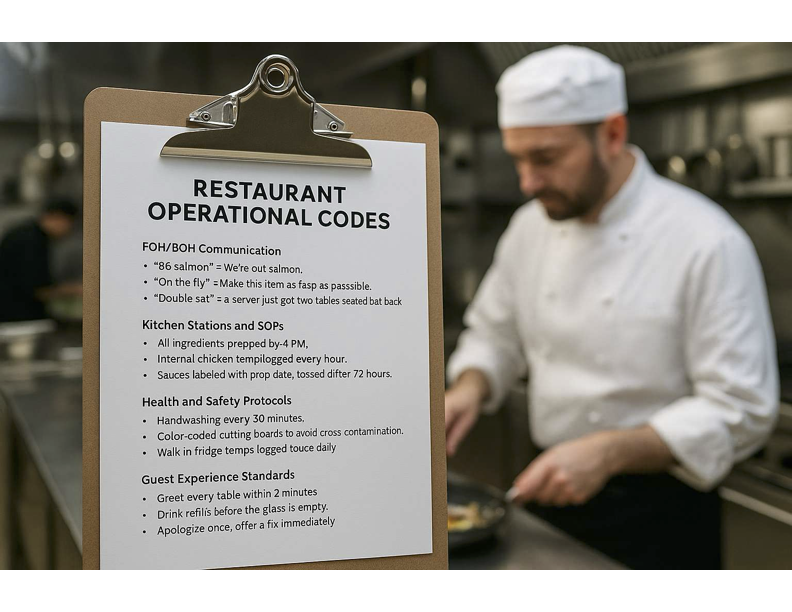Every successful restaurant runs on more than great food — it runs on systems. At the heart of those systems are operational codes: the internal rules, shorthand, and procedures that keep the place running smoothly. You won’t find these codes on the menu, but they impact everything from the speed of service to food safety to customer experience.
Let’s break down what restaurant operational codes are, why they matter, and how they shape your dining experience.
What Are Restaurant Operational Codes?
In simple terms, operational codes are internal policies, standard operating procedures (SOPs), and shorthand systems used to run the restaurant day to day. These codes cover everything from:
-
Food safety and hygiene
-
Kitchen workflow
-
Inventory and supply
-
Customer service standards
-
Emergency procedures
-
Staff communication
Some are written in manuals. Others are spoken in code. All are essential.
Examples of Operational Codes in Action
1. FOH/BOH Communication
Front-of-house (FOH) and back-of-house (BOH) teams often use shorthand or headset codes to communicate quickly and discreetly:
-
“86 salmon” = We’re out of salmon.
-
“On the fly” = Make this item as fast as possible.
-
“Double sat” = A server just got two tables seated back-to-back.
This speeds up decision-making and reduces chaos.
2. Kitchen Stations and SOPs
The kitchen is organized like a machine — each cook has a station (grill, salad, expo, etc.) and follows precise SOPs for prep, cooking, and plating. No guesswork allowed.
For example:
-
All ingredients prepped by 4 PM.
-
Internal chicken temp logged every hour.
-
Sauces labeled with prep date, tossed after 72 hours.
3. Health and Safety Protocols
These aren’t just regulations — they’re enforced codes:
-
Handwashing every 30 minutes.
-
Color-coded cutting boards to avoid cross-contamination.
-
Walk-in fridge temps logged twice daily.
Break these codes, and you risk a shutdown.
4. Guest Experience Standards
Operational codes often define how staff should interact with guests:
-
Greet every table within 2 minutes.
-
Drink refills before the glass is empty.
-
Apologize once, offer a fix immediately.
These aren’t suggestions. They’re practiced, tracked, and enforced.
Why These Codes Matter
Restaurants deal with thin margins, tight timing, and high expectations. Operational codes create structure, reduce risk, and help deliver consistent quality. Without them, even a talented team falls apart under pressure.
Think of them as the choreography behind the service. If you’ve ever had a flawless dinner out — food hot, server on point, zero mistakes — that wasn’t luck. That was code.
The Downside: When Codes Get in the Way
Not all codes are good. Some are outdated, overly rigid, or misused. Common issues include:
-
Too much micromanagement leading to burnout.
-
Unwritten rules that create cliques or bias.
-
Lack of transparency about how policies are enforced.
The best restaurants update and question their codes regularly, just like they update menus.
Final Word
Operational codes aren’t just for managers. Everyone in the restaurant — from dishwashers to bartenders — depends on these systems to survive the shift. When they’re smart, clear, and enforced fairly, codes elevate the entire operation.
So next time your meal arrives hot, fast, and perfect, know there’s more than skill behind it. There’s code.

